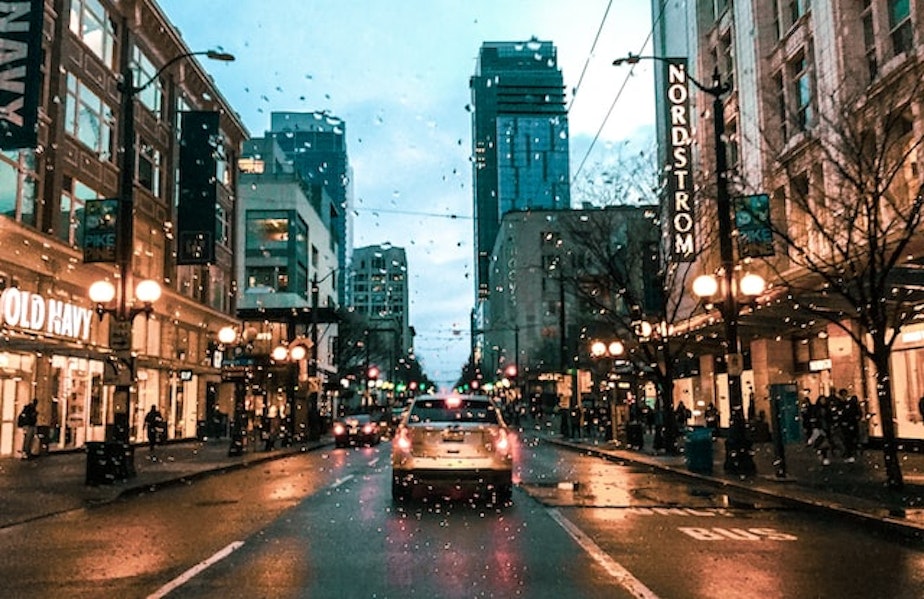Are Seattleites lousy at driving in the rain? Sort of, but so is everyone else

Almost on cue, summer turned to fall and the rain came down in Western Washington. The deluge coincided with a spike in car collisions, 98 so far in King County since Tuesday, according to the Washington State Patrol.
This raised a slightly sensitive question in our newsroom. Seattleites are well-known for their poor snow-driving abilities. We can all pretty much cop to that. But are we below-average drivers in rain, too? Recently retired Washington State Transportation Center director Mark Hallenbeck said it's hard to say for sure.
"Everywhere, accidents go up in the rain. No doubt about it. Everywhere, accidents are higher on the earliest days of rain relative to other days of rain," Hallenbeck said. "Are Seattleites worse in the rain than other people in the rain? It's hard to answer in a scientific manner. My gut reaction is no, because we spend more time doing it."
Anecdotally, most of us think it's the other driver who's not being safe. But most of us also know our area roads are more dangerous when the rains come, due to built-up oily residues after a dry summer.
What do we all need to do to avoid collisions as the rainy season begins? Washington State Department of Transportation spokesperson Aisha Dayal gave us a complete list of tips.
- Before you go, make sure your windshield wipers are working, and your tires have adequate tread.
- Turn on your headlights.
- Turn off cruise control, which can cause hydroplaning, even at low speeds.
- Maintain an increased distance between cars. It could take you longer to stop.
- Allow for extra time to get to your destination.
- Expect standing water on the roadways
- And most importantly, slow down.
Sponsored
Dayal said even though the speed might be 60 mph, conditions may not allow that. She added, if you do hydroplane, don't panic. Avoid hard braking — light pumping is better, and ease off the gas.
"I know that when your car hydroplanes, people instinctively want to brake really hard," Dayal said. "But that could cause it to skate and slide across the roadway."
Dayal also urges people never to drive through standing water of unknown depths.
"Six inches of standing water is enough to make a vehicle stall, a foot of water can make you lose control of your car, and two feet can sweep a vehicle away," she said.
And if you see a road closed sign, Dayal said, don't be tempted to drive around it.
Sponsored
"The road closed sign is there for a reason," she said. "Although you might not see at the closure point why, the road ahead might not be safe."
Those reasons could include standing water and downed trees or power lines.
Hallenbeck from the Transportation Center said psychological factors are also at play in rain-related collisions.
"When you have four months (of dry weather), you stop thinking about what that really means in terms of your ability to drive," Hallenbeck said. "And the differential in the friction coefficients is a very real thing. When you see the yellow sign that says 40 mph, you think, of course you could take it at 50 mph. You've got a good car, and good tires, and you drive well. It's not a problem. And that's true in dry weather, but on the first day of rain after four months, you might need to take it at 40."




